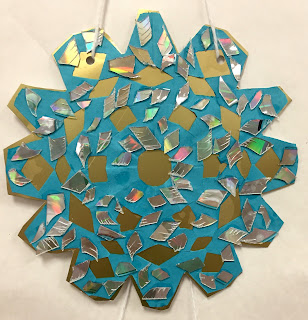Another Ohio winter, another way to incorporate more recycling into my curriculum. If you've followed my blog for any amount of time, you'll know I'm pretty opposed to holiday themed projects. Holiday crafts can happen in the regular classroom. We learn about art in my room. This lesson revolves around a big part of winter- snowflakes!
About 5 years ago, a box of old software CDs was dumped in my room. You know, somebody has something that they don't really want to throw away, so they give it to the art teacher. "I had these and I thought of you!" they say. Inwardly, I'm figuring out where I can store these newly found "treasures" or how I can surreptitiously get rid of them.
Luckily, I was able to figure out something to do with the CDs. Good thing, too. I've got enough to last me into the next decade. I had previously done a paper mosaic snowflake geometry project with my 4th graders. Looking back, it was pretty terrible. I suppose I could have switched a few things around and improved it, but I came up with this instead.
Students study mosaic artwork as well as the natural geometry of snowflakes. I show them how to fold and cut a six sided snowflake. After that, students simply mount the snowflake on either a gold or silver poster board, trim the board, and add CD shards. The best snowflakes tend to be the ones in which students carefully match the shape of CD pieces to the design of the snowflake. The outcome can be extraordinarily beautiful.
**Helpful hint- no amount of pounding on a CD with a hammer will break a CD into little pieces. I use my paper cutter to slice the CDs into strips which easily break apart into smaller pieces for students to use.
Click here to download my full lesson plan!
Monday, December 21, 2015
Tuesday, December 8, 2015
Nonobjective Tint Paintings by 4th Grade
I try to vary my lesson plans for students. 4th grade recently finished their totem pole project. It's pretty intense and has a high degree of difficulty. This painting lesson provides a nice change of pace for my students. It's much more open and doesn't have guidelines that are quite as rigid.
This is the second year I have taught this project. It's very straightforward. We talk about what nonobjective art is and we look at several examples. I then challenge students to create their own compositions using whatever types of shapes and lines they want. They try to create interest by using overlapping shapes as well as designing areas that are more complex.
Since we are learning about tints, obviously students get to mix paints to create their tints. This is the absolute highlight of the lesson for most students. Nothing is more exciting than busting out the mixing trays. I ask students to select two main colors (in addition to white) to use the for their paintings. Limiting the color really enhances the overall design of the paintings.
I get some really killer detail work out of my students on this project. I bought a set of #2 bright brushes. They are flats that have shorter bristles. They are wonderful for detail. They allow students to accurately paint the small overlapping shapes in their work. The work is finished by students choosing either black paint or crayon to go over all of their original drawing. Again, this is to bring out the original design. You know how it can get a little lost during the painting process. I used to have students do this with Sharpies, but Sharpie doesn't particularly like tempera paint.
Enjoy these amazing examples from this project!
Click here to download my lesson plan!
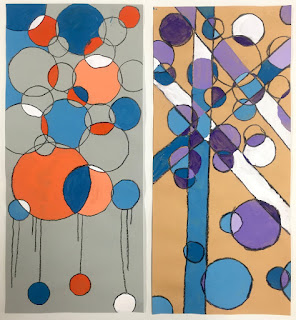
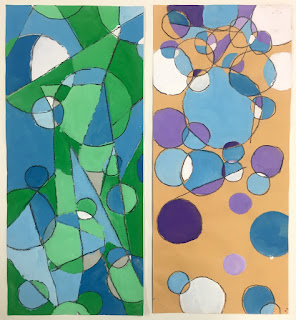
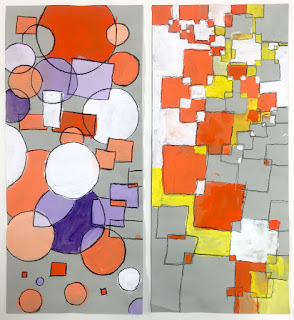
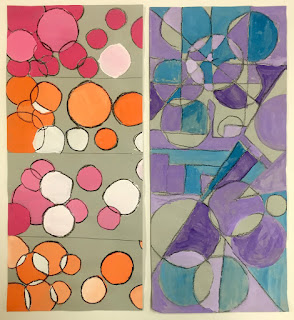
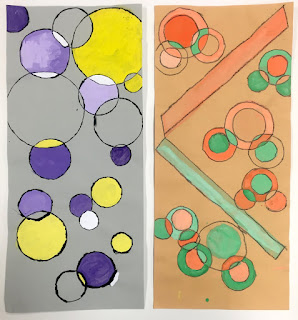
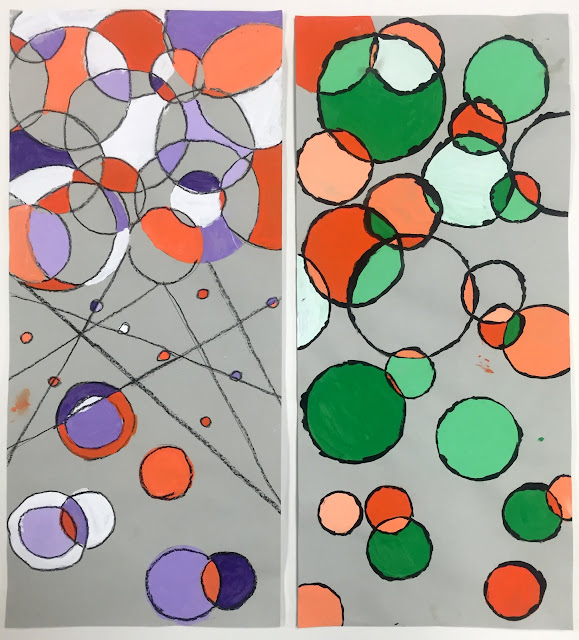
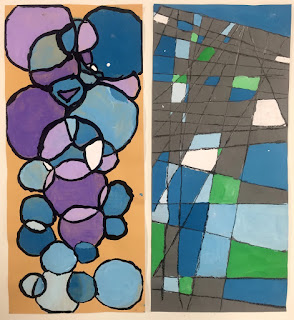
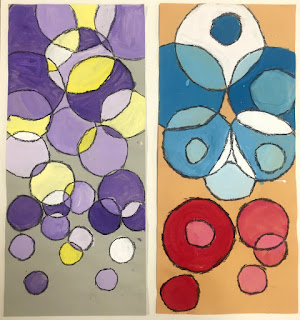
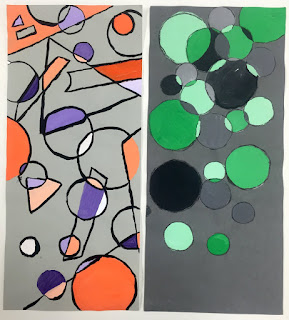
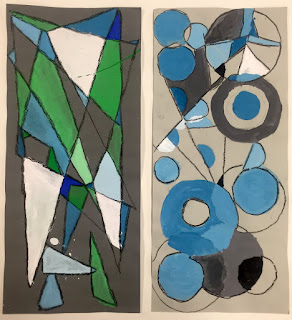

This is the second year I have taught this project. It's very straightforward. We talk about what nonobjective art is and we look at several examples. I then challenge students to create their own compositions using whatever types of shapes and lines they want. They try to create interest by using overlapping shapes as well as designing areas that are more complex.
Since we are learning about tints, obviously students get to mix paints to create their tints. This is the absolute highlight of the lesson for most students. Nothing is more exciting than busting out the mixing trays. I ask students to select two main colors (in addition to white) to use the for their paintings. Limiting the color really enhances the overall design of the paintings.
I get some really killer detail work out of my students on this project. I bought a set of #2 bright brushes. They are flats that have shorter bristles. They are wonderful for detail. They allow students to accurately paint the small overlapping shapes in their work. The work is finished by students choosing either black paint or crayon to go over all of their original drawing. Again, this is to bring out the original design. You know how it can get a little lost during the painting process. I used to have students do this with Sharpies, but Sharpie doesn't particularly like tempera paint.
Enjoy these amazing examples from this project!
Click here to download my lesson plan!











Subscribe to:
Comments (Atom)





